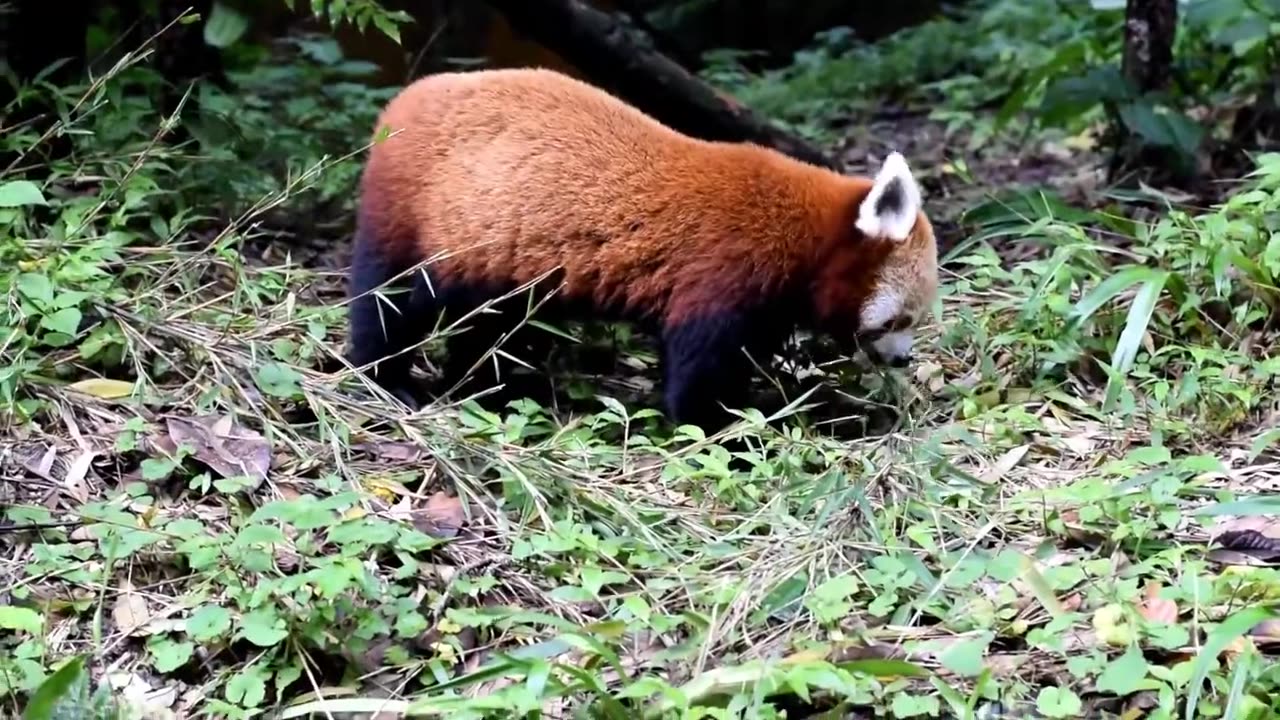Premium Only Content

About The Red Panda
The red panda, scientifically known as Ailurus fulgens but also affectionately referred to as the lesser panda, the red bear-cat, and the red cat-bear, is a captivating mammal endemic to the lush landscapes of the eastern Himalayas and southwestern China. It sports a lustrous coat of reddish-brown fur, a distinctive long and shaggy tail, and a charming waddle in its step, a result of its relatively shorter front legs. Although it shares a similar size to a domestic cat, its physique boasts a longer body and a somewhat heftier presence. This enchanting creature predominantly leads an arboreal lifestyle, relishing its diet with a primary menu of bamboo, occasionally accompanied by eggs, birds, and insects. Red pandas are often characterized as solitary beings, with their peak activity occurring during the twilight and early morning hours, while they tend to lead more sedentary lives during daylight.
Sadly, the red panda's status is one of concern, as it has earned the unsettling label of "endangered" from the International Union for Conservation of Nature (IUCN). The wild population, estimated at fewer than 10,000 mature individuals, continues to decline due to a confluence of factors including habitat loss and fragmentation, poaching, and the insidious specter of inbreeding depression. Even with protective measures in place under national laws within their respective range countries, the red panda's precarious existence remains imperiled.
Taxonomically speaking, the red panda stands as the sole living species within the Ailurus genus and the Ailuridae family. While previously associated with raccoons and bears, cutting-edge phylogenetic analysis resolutely supports its placement within the Ailuridae family, a unique classification that sets it apart from the raccoon and bear families. This family is part of the broader Musteloidea superfamily, sharing its genetic branch with fellow animal families such as weasels, raccoons, and skunks. Further distinguishing itself, the red panda is recognized through two subspecies and maintains an intriguing genetic distance from its large and iconic counterpart, the giant panda, which traces its roots to the basal ursid lineage.
-
 8:00:05
8:00:05
SpartakusLIVE
13 hours agoDuos w/ GloryJean || Friday Night HYPE w/ The MACHINE
51.2K1 -
 3:47:23
3:47:23
Nerdrotic
15 hours ago $35.09 earnedFantastic 4 HER! Daredevil BORE Again SUCKS! Disney Star Wars is DESPERATE | FNT Vegas 350
157K27 -
 5:21:14
5:21:14
MyronGainesX
1 day ago $26.33 earnedFormer Fed Explains FSU Shooting, Charlie Kirk vs Groyper Debate!
116K41 -
 1:03:22
1:03:22
IsaacButterfield
13 hours ago $4.66 earnedKaty Perry in Space?! Trans Women Law Controversy & Lizzo's Weight Loss Shocks Fans!
54.5K16 -
 6:15:39
6:15:39
Sm0k3m
10 hours agogaming night
51.6K1 -
 3:48:35
3:48:35
I_Came_With_Fire_Podcast
18 hours agoHOUTHIS & CHINA | MURDERER MERCH STORE | TRUMP SICK OF WAITING
55K9 -
 1:09:15
1:09:15
Keepslidin
8 hours ago $1.07 earnedIRL GAMBLING & GIVING PEOPLE MONEY WHEN THEY WIN
30.7K5 -
 6:10:30
6:10:30
Eternal_Spartan
19 hours agoLive at 9pm Central | Halo 3 & Halo Firefight! Come Hang out with a USMC Vet and join the best chat!
31.1K1 -
 4:06:20
4:06:20
VapinGamers
10 hours ago $1.81 earnedFortnite Friday - Game Night with the Family - !brian !rumbot
34.9K6 -
 59:22
59:22
Motherland Casino
8 hours ago $1.82 earnedScar x Ayanna
19K11